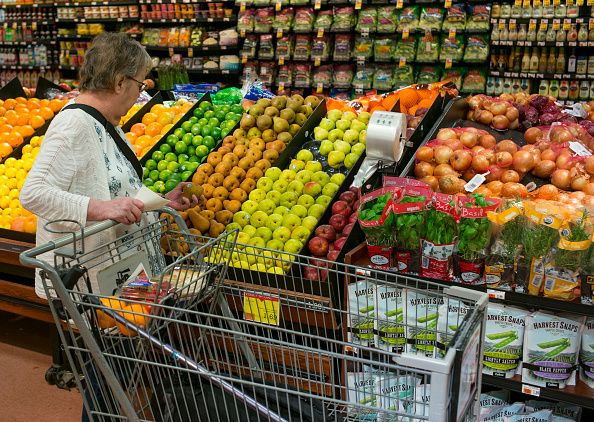How Supermarkets Can Help Shoppers Make Healthier Choices
KEY POINTS
- Researchers found whether grocery layouts can lead to healthier customer choices
- They implemented two particular interventions at grocery stores in England
- Stores that implemented interventions saw "store-wide" increase in fruits, vegetable sales
How can people make healthier food choices when going grocery shopping? Supermarkets can actually help them make better decisions by introducing some simple changes to their layout.
Grocery shopping can be tricky, with shoppers being presented with both healthy and unhealthy food choices. In their study, published in the journal PLOS Medicine Tuesday, a team of researchers had a closer look at how the supermarkets themselves can help prompt customers to make healthier choices.
In the said study, which was done in cooperation with the British supermarket chain Iceland Foods, the researchers monitored store sales and purchasing patterns of regular customers at Iceland stores in England, PLOS said in a news release.
They implemented two particular interventions to three Iceland stores for six months — they placed the fresh fruit and vegetable areas closer to the store entrances and the frozen vegetables to the entrance aisle. They also removed the confectionery and other unhealthy products from checkouts and at the end of opposite aisles.
Apart from these three intervention stores, the researchers also looked at the sales and "customer profiles" of three other control stores, the researchers wrote.
Interestingly, the researchers found a reduction in store-wide sales for confectionery and an increase in fruit and vegetable sales when the non-food items were placed at the checkout and the fruits and vegetables were placed closer to the entrance instead of "smaller displays at the back."
"Altering the layouts of supermarkets could help people make healthier food choices and shift population diet towards the government's dietary recommendations," study lead Dr. Christina Vogel of the University of Southampton said in the PLOS news release. "The findings of our study suggest that a healthier store layout could lead to nearly 10,000 extra portions of fruit and vegetables and approximately 1,500 fewer portions of confectionery being sold on a weekly basis in each store."
"Trends for the dietary variables were predominantly in the expected direction for health benefit, with improvements in women's overall dietary quality and daily fruit and vegetable intake at 3 months follow-up, particularly noteworthy for size of dietary change," the researchers wrote. "The economic analysis showed virtually no impact on weekly household grocery spend across all participants or overall weekly store sales across all stores, indicating no detrimental cost effect of the intervention to participants or the retailer."
Although there have been previous product placement trials in supermarkets, these have been "limited in scope," the researchers said. For instance, some only focused on a specific location such as the checkout or simply placed the healthy and unhealthy choices together, PLOS noted.
The current study, on the other hand, is said to be more comprehensive and has "a number of other advantages over existing supermarket placement research."
Matt Downes, head of format development at Iceland Foods, expressed support for the study on how the simple act of adjusting product placement can affect customers' diets.
"We know that childhood obesity is a growing issue and the retail industry has its part to play in tackling this," Downes said as per the University of Southampton news release. "We hope that the outcomes of the study provide insights for the wider retail industry and policymakers about the impact of store merchandising on purchasing decisions."

© Copyright IBTimes 2025. All rights reserved.






















